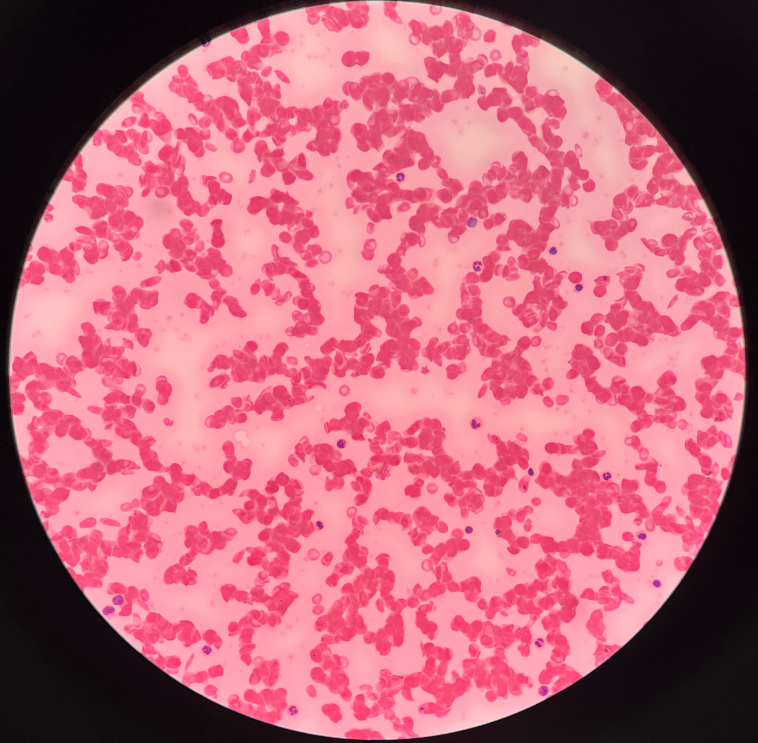BSC2086L E.2 Blood
0.0(0)
Card Sorting
1/16
Study Analytics
Name | Mastery | Learn | Test | Matching | Spaced |
|---|
No study sessions yet.
17 Terms
1
New cards
whole blood
• A viscous mixture of fluid containing formed elements suspended in plasma.
• Transports dissolved substances, establishes hemostasis, involved in defense against pathogens, regulates pH by buffer action, and regulates body temperature.
• Transports dissolved substances, establishes hemostasis, involved in defense against pathogens, regulates pH by buffer action, and regulates body temperature.
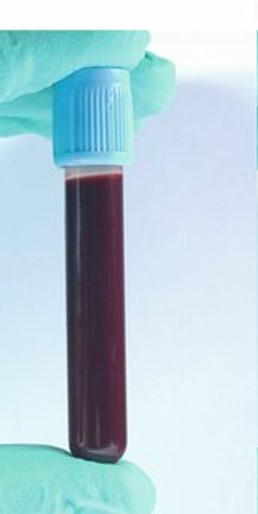
2
New cards
red cell layer
• The bottom layer of centrifuged blood.
• Consists of erythrocytes.
• Consists of erythrocytes.
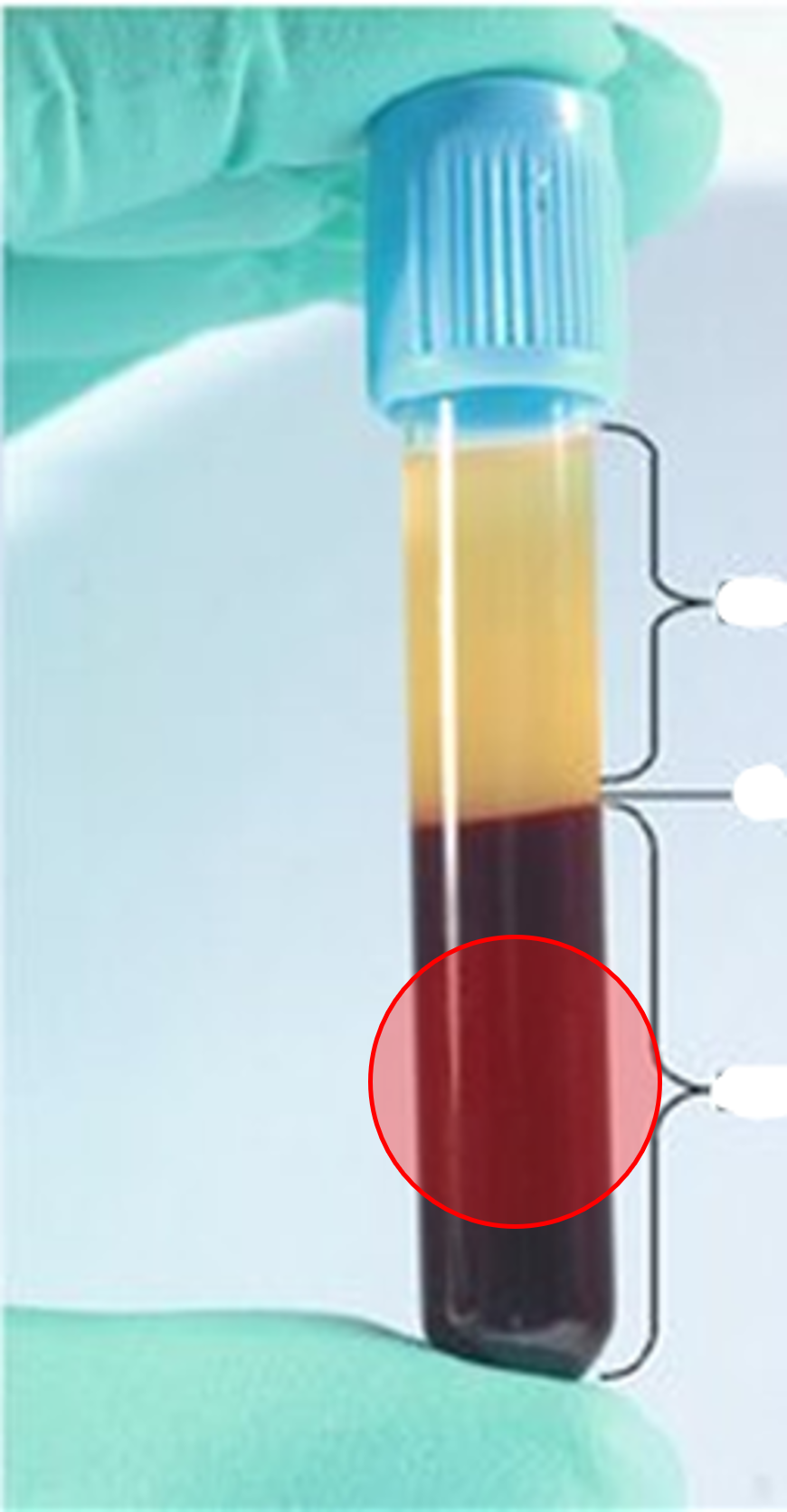
3
New cards
buffy coat layer
• The thin layer between the red cell layer and the plasma in centrifuged blood.
• Consists of leukocytes and platelets.
• Consists of leukocytes and platelets.
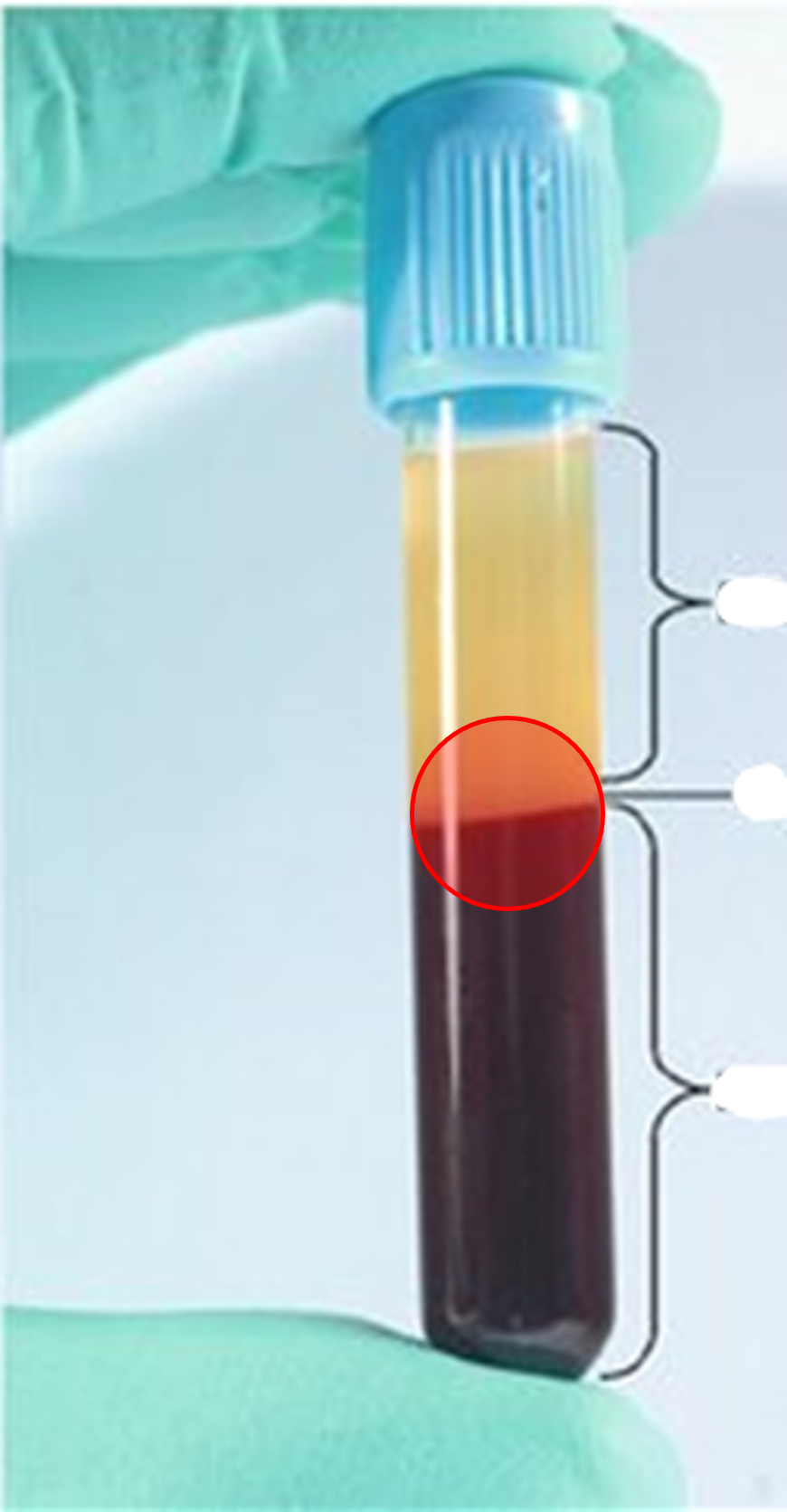
4
New cards
plasma
• The top layer of centrifuged blood.
• Consists of mostly water with proteins, nutrients, electrolytes, enzymes, hormones, waste products, and gases.
• Consists of mostly water with proteins, nutrients, electrolytes, enzymes, hormones, waste products, and gases.
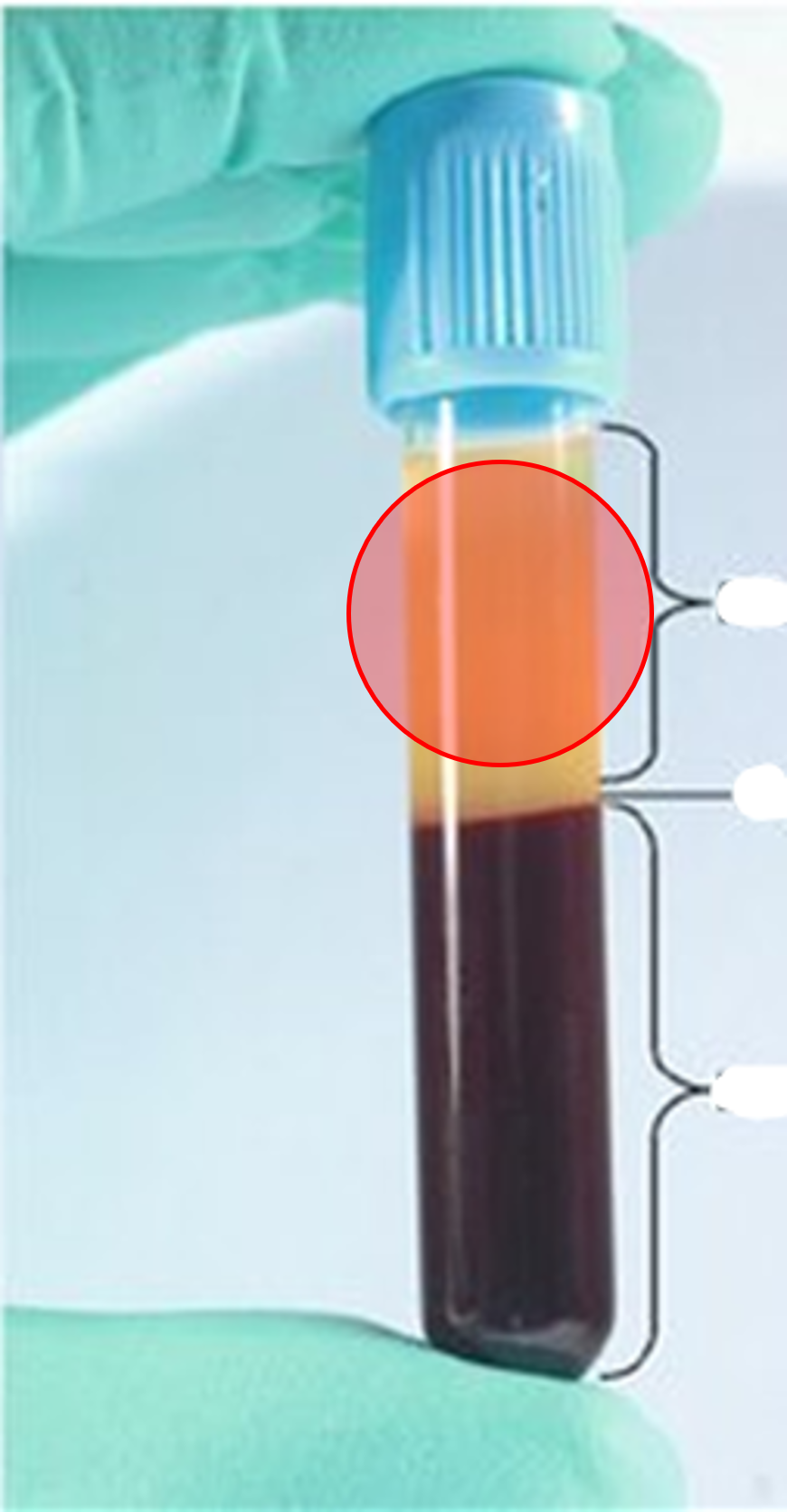
5
New cards
erythrocyte
• Most abundant cell in whole blood.
• Appears red and rounded.
• Contains hemoglobin.
• Transports oxygen and carbon dioxide.
• Also known as red blood cells (RBCs).
• Appears red and rounded.
• Contains hemoglobin.
• Transports oxygen and carbon dioxide.
• Also known as red blood cells (RBCs).
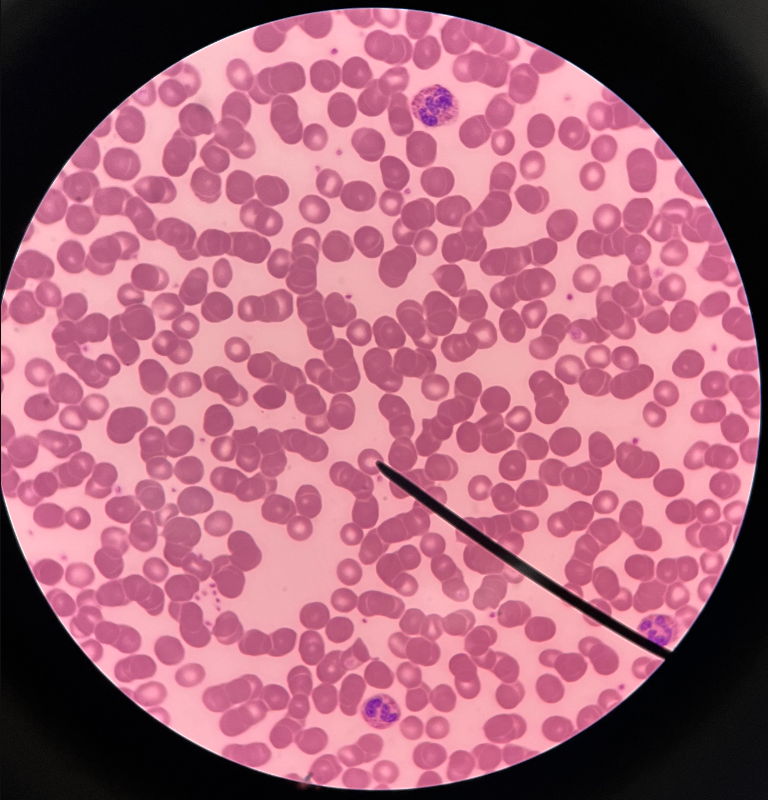
6
New cards
leukocyte
• Uncommon cell in whole blood.
• Has various immune functions.
• Can be divided into a granulocyte or agranulocyte.
• Also known as a white blood cell.
• Has various immune functions.
• Can be divided into a granulocyte or agranulocyte.
• Also known as a white blood cell.
7
New cards
platelet
• Cytoplasmic fragments of megakaryocytes.
• Appears small and irregularly shaped.
• Controls hemostasis (blood clotting).
• Also known as a thrombocyte.
• Appears small and irregularly shaped.
• Controls hemostasis (blood clotting).
• Also known as a thrombocyte.
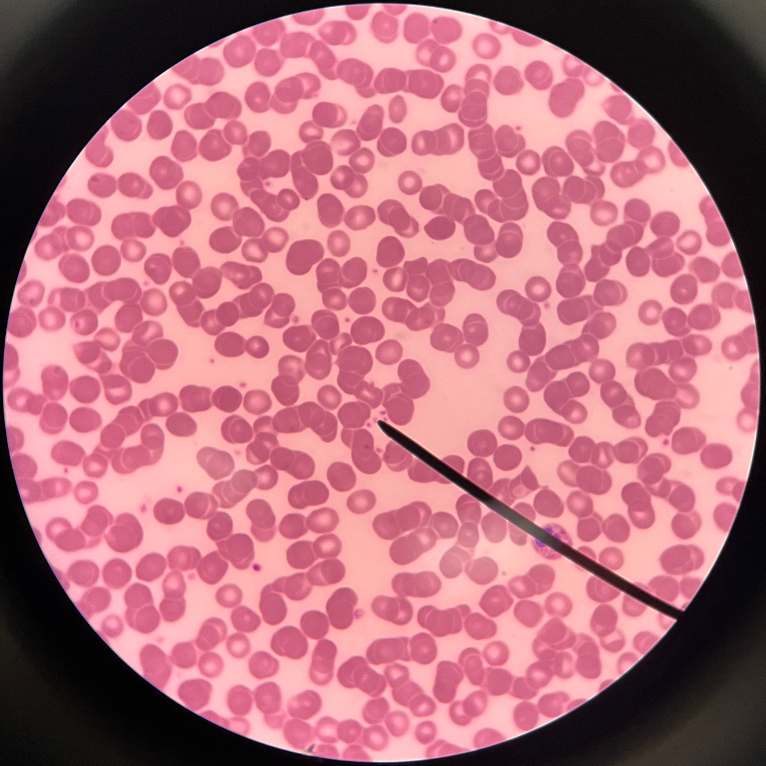
8
New cards
granulocytes
• Class of leukocytes.
• Contains visible granules in the cytoplasm.
• Includes neutrophils, eosinophils, and basophils.
• Contains visible granules in the cytoplasm.
• Includes neutrophils, eosinophils, and basophils.
9
New cards
agranulocytes
• Class of leukocytes.
• Does not contain visible granules in the cytoplasm.
• Includes monocytes and lymphocytes.
• Does not contain visible granules in the cytoplasm.
• Includes monocytes and lymphocytes.
10
New cards
neutrophil
• Leukocyte and granulocyte.
• Appears with a multilobulated nucleus with barely visible connecting bands.
• Engulfs and digests pathogens, abnormal cells, and foreign particles.
• Most abundant leukocyte.
• Count increased by bacterial infection or inflammatory diseases.
• Count decreased by drug toxicity or radiation exposure.
• Appears with a multilobulated nucleus with barely visible connecting bands.
• Engulfs and digests pathogens, abnormal cells, and foreign particles.
• Most abundant leukocyte.
• Count increased by bacterial infection or inflammatory diseases.
• Count decreased by drug toxicity or radiation exposure.
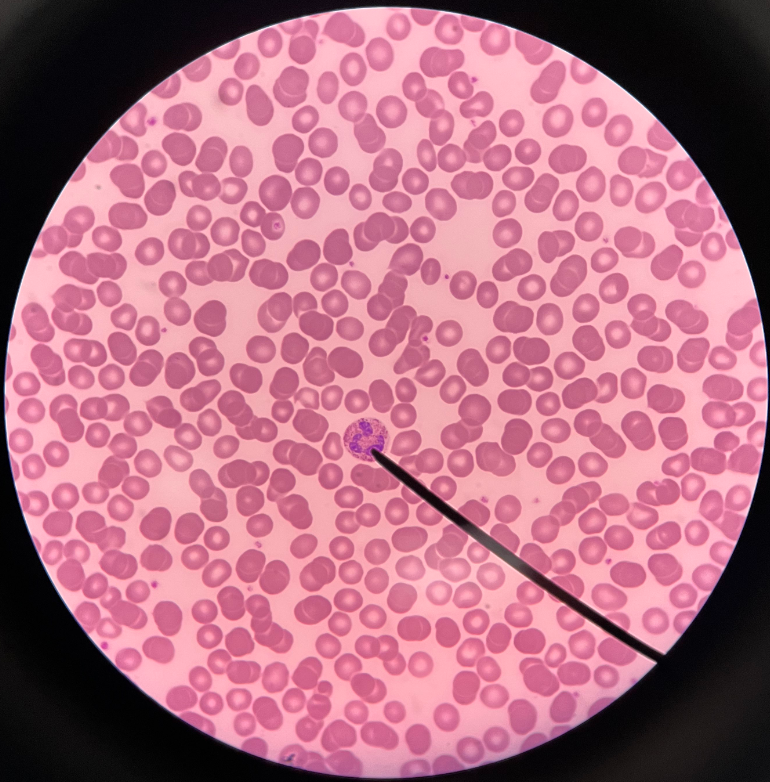
11
New cards
eosinophil
• Leukocyte and granulocyte.
• Appears with a bilobed nucleus with rosy red-stained granules.
• Attacks parasites by releasing toxic substances.
• Count increased by parasitic infection.
• Count decreased by stress.
• Appears with a bilobed nucleus with rosy red-stained granules.
• Attacks parasites by releasing toxic substances.
• Count increased by parasitic infection.
• Count decreased by stress.
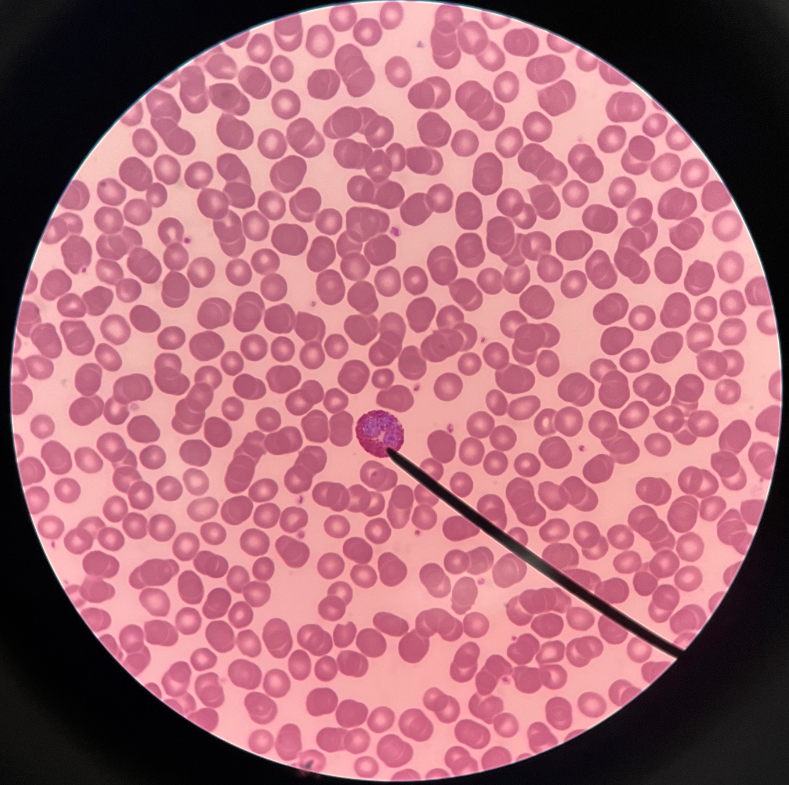
12
New cards
basophil
• Leukocyte and granulocyte.
• Appears with very large and prominent blue-stained cytoplasmic granules. Has a bilobed nucleus.
• Attracted to areas of tissue damage and promotes inflammation.
• Least abundant leukocyte.
• Count increased by allergies or leukemia.
• Count decreased by stress, hypothyroidism, and pregnancy.
• Appears with very large and prominent blue-stained cytoplasmic granules. Has a bilobed nucleus.
• Attracted to areas of tissue damage and promotes inflammation.
• Least abundant leukocyte.
• Count increased by allergies or leukemia.
• Count decreased by stress, hypothyroidism, and pregnancy.

13
New cards
monocyte
• Leukocyte and agranulocyte.
• Appears with a horseshoe-shaped nucleus and much cytoplasm; about twice the size of an erythrocyte.
• The largest leukocyte.
• Migrates out of the bloodstream and enters tissues as macrophages. Particularly appears in the lung, spleen, liver, and lymph nodes.
• Count increased by bacterial, viral, and fungal infections; or leukemia.
• Count decreased by chronic illness or anti-inflammatory treatments.
• Appears with a horseshoe-shaped nucleus and much cytoplasm; about twice the size of an erythrocyte.
• The largest leukocyte.
• Migrates out of the bloodstream and enters tissues as macrophages. Particularly appears in the lung, spleen, liver, and lymph nodes.
• Count increased by bacterial, viral, and fungal infections; or leukemia.
• Count decreased by chronic illness or anti-inflammatory treatments.
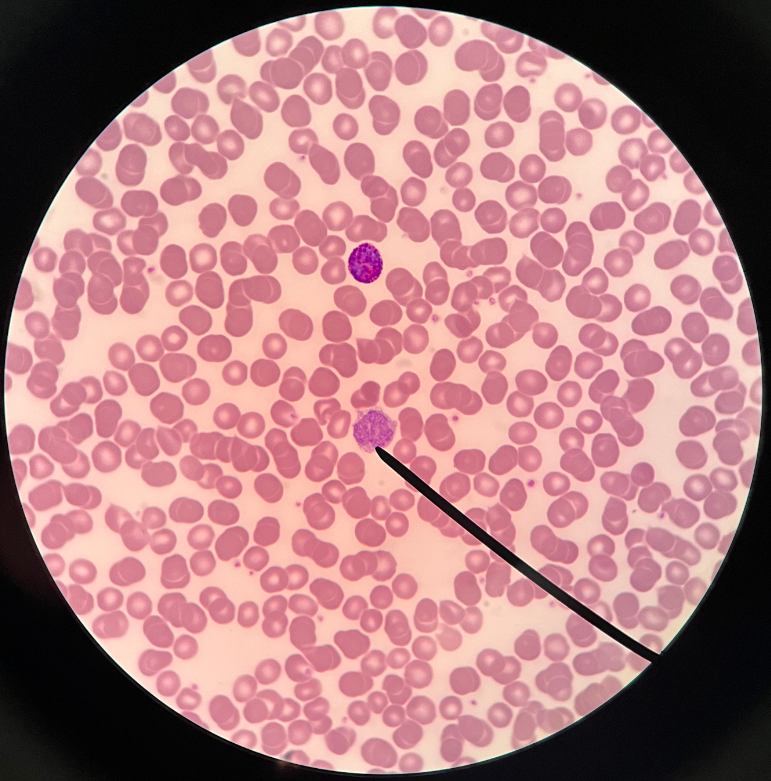
14
New cards
lymphocyte
• Leukocyte and agranulocyte.
• Appears with a nucleus filling most of the cell and a small rim of cytoplasm.
• Second-most abundant leukocyte.
• Several types: B lymphocytes, plasma cells, cytotoxic T lymphocytes, and natural killer (NK) cells.
• Count increased by bacterial, viral, and fungal infections; or leukemia.
• Count decreased by immune diseases or anti-inflammatory treatments.
• Appears with a nucleus filling most of the cell and a small rim of cytoplasm.
• Second-most abundant leukocyte.
• Several types: B lymphocytes, plasma cells, cytotoxic T lymphocytes, and natural killer (NK) cells.
• Count increased by bacterial, viral, and fungal infections; or leukemia.
• Count decreased by immune diseases or anti-inflammatory treatments.
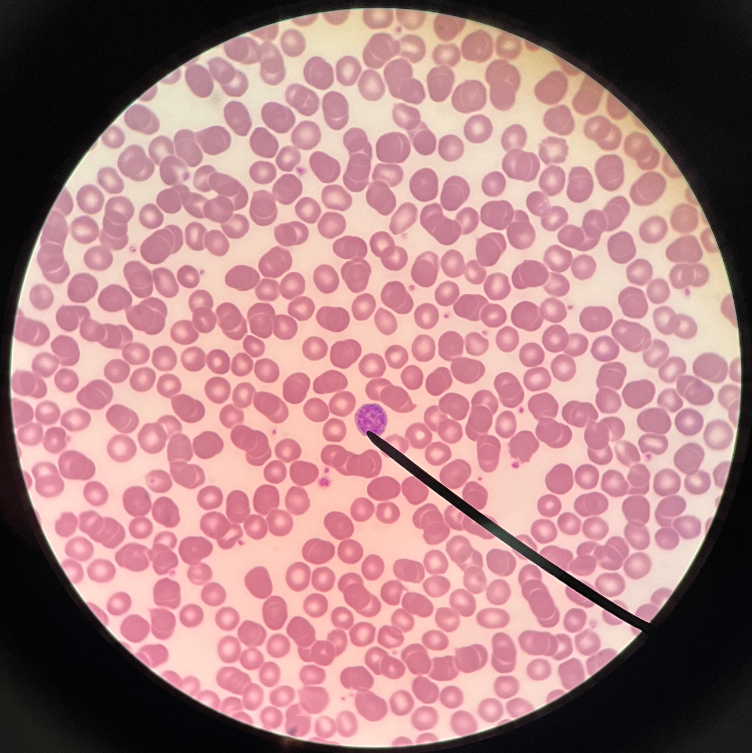
15
New cards
leukemia
• Cancer of the blood-forming tissue in bone marrow and lymphatic tissue.
• Marked by uncontrolled production of immature leukocytes.
• Acute and chronic variants.
• Marked by uncontrolled production of immature leukocytes.
• Acute and chronic variants.
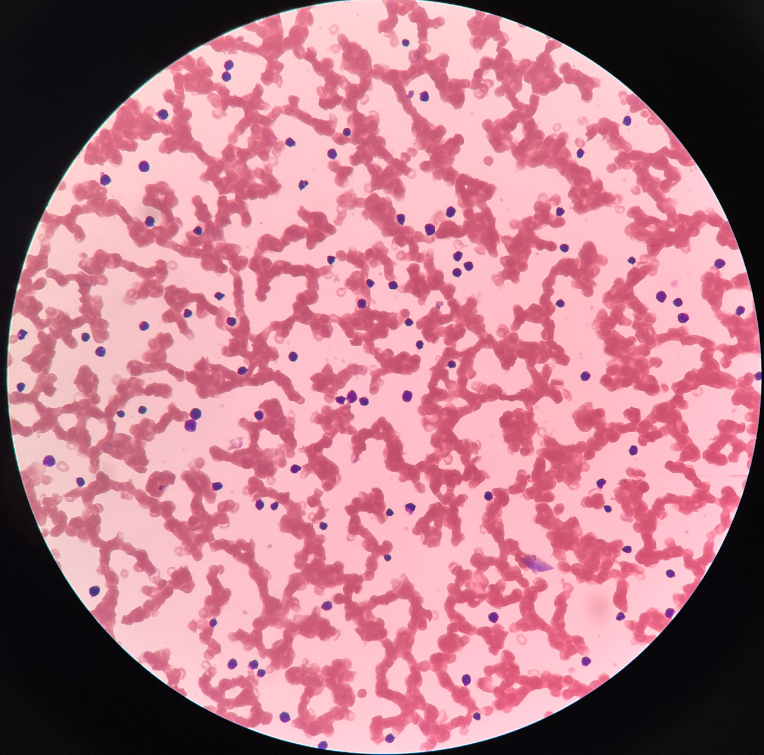
16
New cards
iron deficiency anemia
• Type of anemia.
• Insufficient iron in the body prevents the formation of hemoglobin.
• Erythrocytes appear smaller and more pale in color.
• Insufficient iron in the body prevents the formation of hemoglobin.
• Erythrocytes appear smaller and more pale in color.
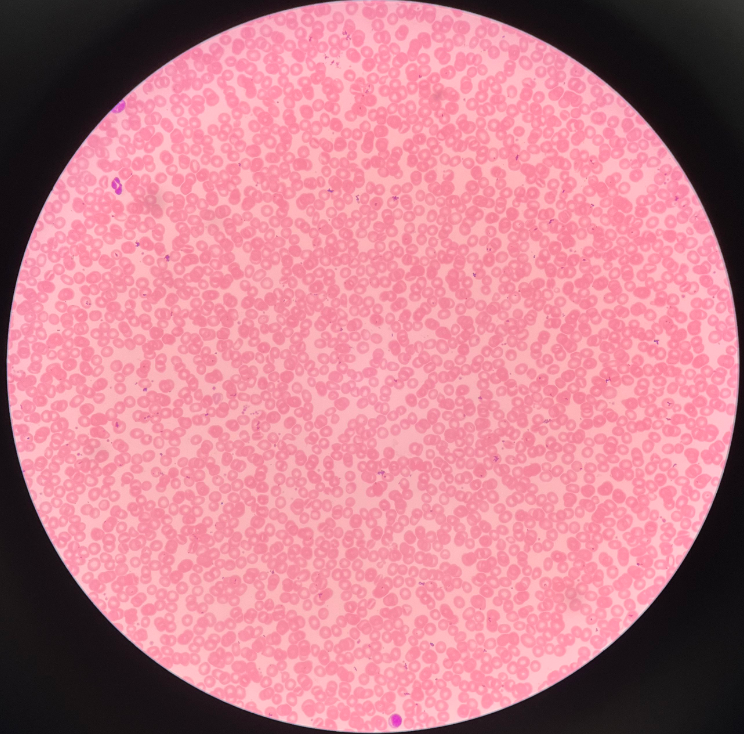
17
New cards
sickle cell anemia
• Type of anemia.
• Genetic mutation causes malformation of hemoglobin.
• Erythrocytes appear rigid and sickle-shaped.
• Genetic mutation causes malformation of hemoglobin.
• Erythrocytes appear rigid and sickle-shaped.
